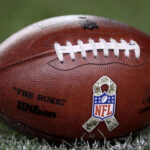 As children grow up, they are taught explicit and implicit rules for how to behave, who to associate with, and which activities to participate in. Girls are meant to embody all things stereotypically “feminine”: politeness, passivity, communion, caregiving, and everything pink. Conversely, boys are meant to epitomize “manliness” almost from birth; one must be powerful, strong, aggressive, and commanding, all of which share the unifying emotional subtext that manhood is the antithesis of expressing emotion. Winning is crucial. Neither kindness nor compassion are tolerated. And admitting weakness is unthinkable.
As children grow up, they are taught explicit and implicit rules for how to behave, who to associate with, and which activities to participate in. Girls are meant to embody all things stereotypically “feminine”: politeness, passivity, communion, caregiving, and everything pink. Conversely, boys are meant to epitomize “manliness” almost from birth; one must be powerful, strong, aggressive, and commanding, all of which share the unifying emotional subtext that manhood is the antithesis of expressing emotion. Winning is crucial. Neither kindness nor compassion are tolerated. And admitting weakness is unthinkable.
Rules of femininity grant the allowance and even expectation for girls to express emotions. These rules, which arguably serve as beneficial for half of the population, act as an impending threat for the remaining half. The danger of femininity infiltrating masculine arenas - particularly in sports - leads coaches, parents, and teammates to use the risk itself as insults. Coded gender language operates as humiliation and mockery among male athletes - insults like He throws like a girl, He’s a wuss, or He’s so gay. The explicit goal of masculinity is the relentless renunciation of the “feminine.”
Any sign of weakness or emotion results in both external and internal rejection and humiliation, which teaches male athletes to suffer in silence. The negative rhetoric surrounding expression of emotion prohibits dialogue for awareness of mental health in sports. Little league participation ribbons and professional sports contracts alike create an illusion that male athletes are impervious to mental health issues.
Take Cleveland Cavalier player Kevin Love, for example. Neither the neurotransmitters in his brain nor the trauma from losing his grandmother care about his five-time All-Star endowment or his 2016 NBA championship. In a rare disclosure about a mid-game panic attack he experienced, Love explained that no matter how many highly trained professionals closely manage all aspects of physical coaching, training, and fueling, there are no professionals or opportunities allotted for the mental ones.
University of Washington football player Isaiah Renfro faced similar obstacles; however, these difficulties led to a potentially much more permanent result. The volatile mix of mental health taboos, improperly functioning brain chemistry, and the burdensome pressure of success prompted Renfro to attempt take his own life in 2015. It was only after this attempt that he was able to receive proper treatment.
Athletes in many organizations and levels have subsequently spoken out about the difficulty of creating an acknowledging and accepting dialogue. Despite these efforts from successful athletes like Michael Phelps, Terry Bradshaw, David Freese, and others, defeating the stigma surrounding mental health is perhaps the most challenging task in sports.
It is only when we can eradicate the oppressive stricture disguised as “manliness” that athletes can properly confront and handle their pain rather than bury it. We as a society must grant males the same permission to feel pain and recognize it as normal rather than illness or weakness. Space for athletes to seek help will ultimately cultivate the skill to recognize pain and emotion as teaching opportunities for personal growth and performance improvement.
Too often mental health is equated to mental illness. Creating an environment in sports - especially among males - that allows discussion and appreciation of mental health can eliminate this misconception, and subsequently decrease rates of depression, anxiety, substance abuse, eating disorders, and more. Male athletic success is not immune to mental illness. It’s time to stop treating it as such.








